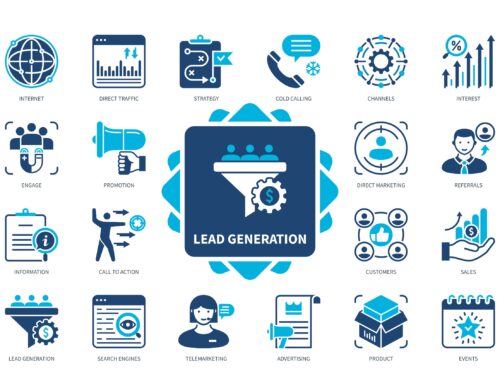Your website is often the first interaction potential customers have with your small business. It’s your digital storefront, and like any brick-and-mortar store, it needs to stay fresh and inviting. However, navigating the waters of a website redesign can be daunting for small business owners. This ultimate guide is designed to help you approach a website redesign with confidence.
Assessment Phase
Before starting any redesign, it’s important to assess where your current website stands and where you want it to go. This initial phase sets the stage for the entire process.
Current Website Evaluation
Begin with a comprehensive evaluation of your existing website. This involves looking at:
- Traffic Data: Use web analytics to understand user behavior, popular pages, and conversion rates.
- Technical Analysis: Examine your site’s loading speed, performance on different browsers, and mobile responsiveness.
- Content Review: Assess the quality, relevance, and engagement level of your existing content. This is also a good time to check for outdated content or broken links.
- Design Scrutiny: Look at your website design from a user perspective. Is it intuitive? Does it reflect your brand accurately?
Defining Goals and Objectives
Based on your website’s evaluation, set clear and measurable goals for your redesign. These could include:
- Increasing Conversions: If the current site isn’t driving enough leads or sales, you might focus on improving your calls to action or simplifying your funnel.
- Boosting Search Visibility: This might involve reworking your site’s structure and content to align with SEO best practices.
- Enhancing User Experience: If user feedback or bounce rates indicate problems, better functionality and layout are likely targets.
- Reflecting Brand Changes: If your business has rebranded, your website’s look and messaging will need to reflect the new brand identity.
- Improving Mobile Performance: If your site isn’t optimized for mobile, you risk losing a significant portion of potential traffic.
By defining these objectives, you’ll ensure that the later stages of your redesign are aligned with driving specific outcomes.
Research and Analysis
With your goals in place, it’s time to dig deep into understanding your audience and the competitive landscape.
Understanding Target Audience
Your website’s content and design should resonate with your customers’ needs and preferences. Use buyer personas to develop a deeper understanding of the people you’re trying to reach:
- Demographics: Age, gender, location, and income can influence design choices and content topics.
- Behavioral Patterns: Think about the problems your customers are trying to solve. How can your website help them with these issues?
- Technological Proficiency: Understanding the tech comfort level of your audience can inform functionality decisions.
Competitor Analysis
A competitive analysis helps you identify what’s working well in your industry and what areas present opportunities for you to differentiate your brand:
- Top Competitors: Identify direct and non-direct competitors.
- Website Features: Note what features and functionalities they use that could be beneficial for your site.
- Content Strategies: Analyze the type of content they produce and how it’s presented.
This research ensures that your website redesign incorporates elements that not only meet but exceed your audience’s expectations.
Design and Development
This phase is about architecting the new structure of your website, choosing the right design elements, and implementing them in a user-friendly way.
Choosing the Right Design Elements
Your website’s design needs to be visually appealing, but it’s equally important that it aligns with your brand and supports your objectives. Some design elements to consider include:
- Color Scheme: Choose a color palette that resonates with your brand and conveys the right emotions to your audience.
- Typography: Fonts play a significant role in readability and the overall aesthetic of your site.
- Imagery: High-quality images and graphics can enhance user experience and communication of your message.
Incorporating User-Friendly Features
Incorporate design elements that improve user experience:
- Easy Navigation: Ensure that the menu and overall layout make it simple for users to find what they’re looking for.
- Fast Loading Times: Users expect a site to load in a matter of seconds. Any longer and they’re likely to abandon it.
- Clear Call to Actions: Make sure your users know what action you want them to take next.
- Accessibility: Your website should be easy to use for everyone, including those with disabilities.
Remember, a website isn’t just a digital brochure; it’s a tool that should guide users towards specific actions or outcomes that benefit both them and your business.
Content Strategy
Content is the heart of any website. It’s what tells your story and convinces visitors to take the next step. Aligning your content strategy with your website redesign is crucial for a holistic approach.
Content Audit and Optimization
Audit your current content to determine what to keep, revise, or eliminate. Optimize your content to:
- Reflect Audience Needs: Ensure that your content addresses the problems or questions your audience has.
- Incorporate SEO Best Practices: Use appropriate keywords, headers, and meta descriptions to improve search rankings.
- Follow a Content Calendar: A calendar ensures that you’re updating regularly to keep both users and search engines engaged.
SEO Integration
Your redesign is an opportunity to improve your site’s SEO. This might involve:
- Keyword Research: Identifying the words and phrases your audience is searching for.
- Site Structure: Organizing your content in a way that’s logical and easy for search engines to index.
- URL and Link Structure: Creating URLs and internal links that are clear and descriptive.
Ensuring that your content is optimized for both users and search engines will increase the likelihood of your site being found and visited by the right people.
Testing and Launch
The testing and launch phase are critical. It’s where you iron out any kinks and make sure your site is ready for the public eye.
Quality Assurance
Test every aspect of your new website, including:
- Functionality: Ensure all links, forms, and interactive elements work properly.
- Responsiveness: Your site should look good and function well on any device.
- SEO Readiness: Confirm that all SEO elements are in place, from meta descriptions to alt-text on images.
Remember, testing should be thorough and conducted by individuals who represent your typical user.
Launch Plan and Monitoring
A successful launch requires a plan to manage potential issues and track performance:
- A/B Testing: If you’re unsure between two options, use A/B testing to determine the most effective choice.
- Monitoring Tools: Implement tools like Google Analytics to immediately track traffic and engagement post-launch.
- Launch Communication: Communicate the launch with your audience, and provide customer support during the period to handle any issues that may arise.
The launch isn’t the finish line; it’s the start of the new life of your website. Proper monitoring will help you make any necessary adjustments quickly as you receive feedback from your audience.
Post-Launch Evaluation
Once your redesigned website is live, the work isn’t over. A post-launch evaluation is essential to make sure it’s performing as expected.
Performance Tracking
Monitor various metrics to track your site’s performance against your goals:
- Traffic: Are more people visiting your site? Are they staying longer?
- Conversions: Are your conversion rates improving? Which pages are driving the most leads?
- Bounce Rate: Is your new design successfully engaging users?
Regularly tracking performance will help you understand the effectiveness of your redesign and identify areas for further improvement.
Feedback Collection and Implementation
Encourage users to provide feedback, whether through surveys, comments, or direct contact. Take this feedback seriously and consider it for future iterations:
- Positive Feedback: What elements do users love about the new design? Enhancing these can help solidify your brand.
- Constructive Criticism: If multiple users have similar complaints, it’s a sign that those aspects of your redesign may need re-evaluation.
Your users are the best source of information about your website’s effectiveness.
Conclusion
A website redesign can be an intensive process, but one with the potential to dramatically improve your business’s online presence. By following the steps outlined in this ultimate guide and dedicating time and resources to each part of the process, you’ll create a site that not only looks great but also contributes to your business growth.
Remember, your website is a living entity in your business. It will need to grow and adapt alongside your company’s growth and changes in the digital landscape. Stay agile and be willing to iterate on what’s been built. Here’s to your successful website redesign and the new opportunities it will bring to your small business!
About Phoenix Web Design Studio
Phoenix Web Design Studio specializes in creating custom, striking web designs tailored to clients’ unique business needs and objectives. Our services extend beyond mere aesthetics, incorporating comprehensive SEO strategies that ensure your site ranks high on search engines.
Additionally, we recognize the power of direct communication in converting prospects into loyal customers, offering personalized email marketing solutions that drive engagement and sales. From the initial design phase to launching a fully optimized site, Phoenix Web Design Studio is committed to elevating your online presence and helping you achieve measurable business growth.
Schedule Your Free Consultation Today!
To kickstart this journey, we offer a FREE 30-minute phone consultation for new websites, website redesigns, and our powerful SEO plans. Don’t miss this opportunity to speak directly with our experienced team and learn how we can make your website a powerful tool for business growth. Book your free consultation now.











